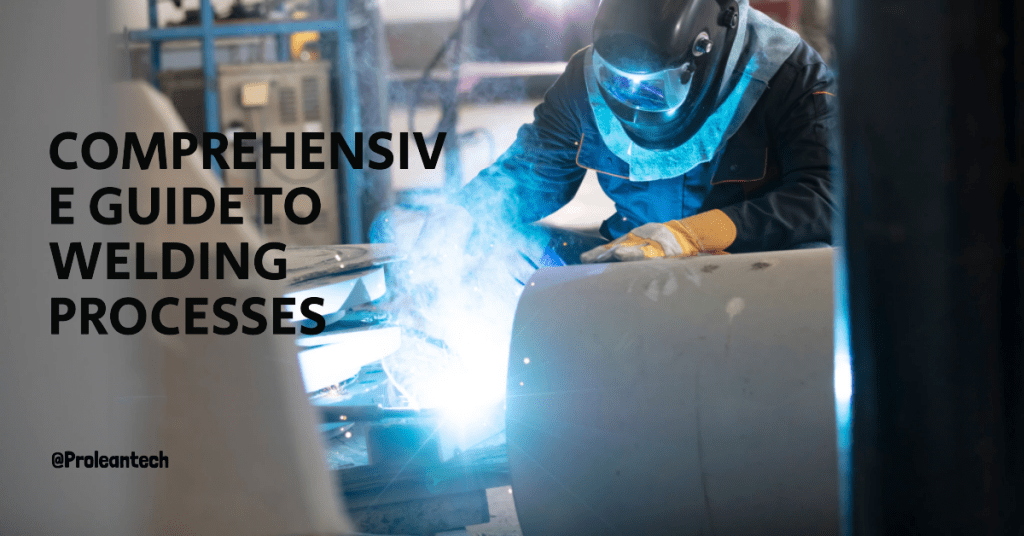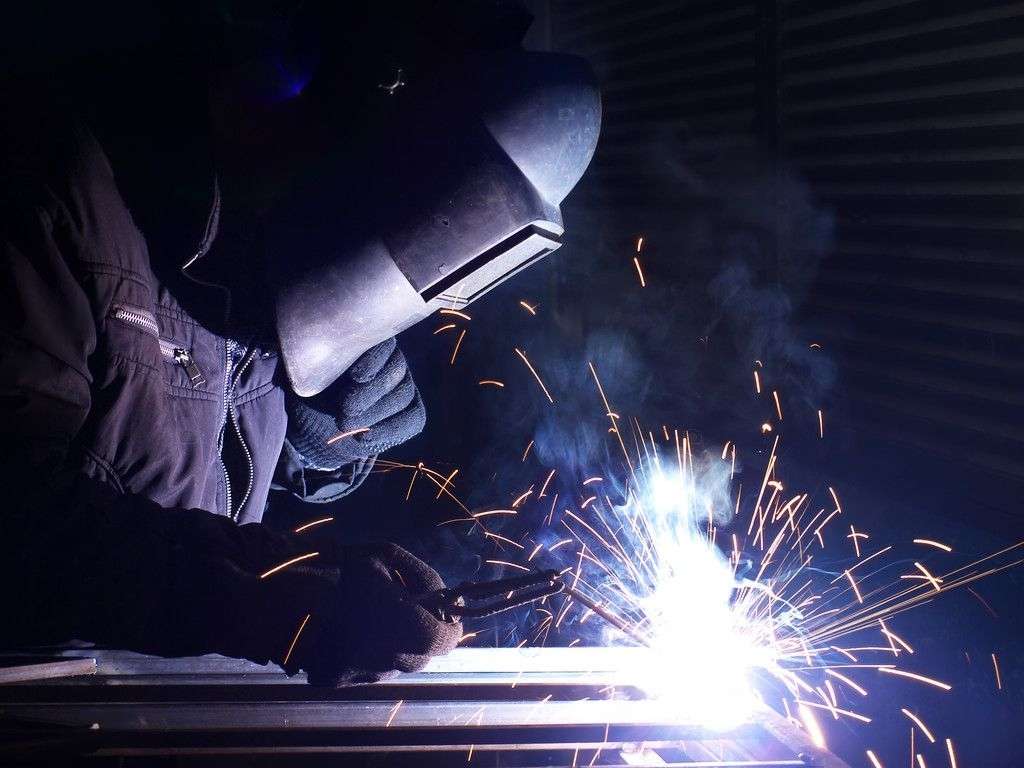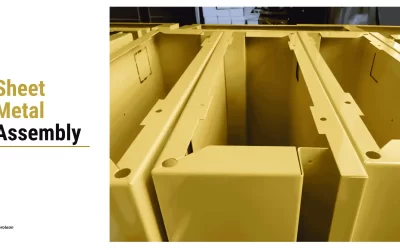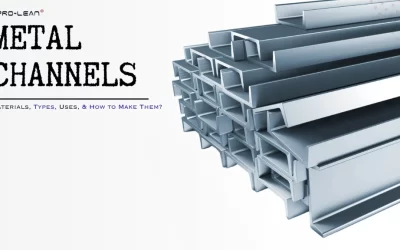
Welding is a critical process in the world of manufacturing, construction, and engineering. It involves the use of heat or pressure to join two or more pieces of metal or thermoplastics together, forming a strong bond. Welding has come a long way since its inception, and over the years, numerous techniques have been developed to cater to different applications and materials. The evolution of welding processes has revolutionized the manufacturing industry, allowing for the creation of complex structures and intricate designs.
Understanding the various welding processes is essential for professionals in the manufacturing industry. This knowledge can help make informed decisions regarding which method is best suited for a specific project, ensuring optimal results. This article will provide an overview of the different welding processes, their applications, and factors to consider when selecting a welding type.
Importance of Selecting the Right Welding Process

Welding process
The selection of the appropriate metal welding process is crucial for the success of a manufacturing project. Each welding process offers unique advantages and disadvantages, making it necessary to choose the right method depending on the specific requirements of the project. The right welding process can significantly impact the quality of the final product, the overall production timeline, and even the cost of the project.
Selecting the appropriate welding method can also help ensure the safety of the workers as well as the durability and performance of the welded components. Additionally, using the correct welding type can minimize the risk of welding defects, such as cracks, distortion, and porosity, which can compromise the structural integrity of the final product.
In summary, choosing the right welding process is vital for achieving project objectives, maintaining high-quality standards, and ensuring the safety and longevity of the final product.
Related: The Advantages of Metal Welding: Why it’s a Preferred Manufacturing Process
Overview of Welding Types
When it comes to welding, there are several types available that are used for different applications. Each type has its own unique set of advantages and limitations that make it more suitable for certain projects than others.
- Gas Welding Processes
- Energy Beam Welding Processes
- Solid-State Welding Processes
- Arc Welding Processes
Next, Let’s take a closer look at the different welding types available and how they can be broadly classified.
Arc Welding Processes
Arc welding is one of the most common welding methods, utilizing an electric arc to generate heat and melt the base materials and filler metal. The electric arc is formed between an electrode and the workpiece, creating a high-temperature environment suitable for melting and fusing the materials. Arc welding processes can be further classified into several types, including:
1. Shielded Metal Arc Welding (SMAW)
Also known as stick welding, SMAW is a widely used manual arc welding process. It employs a consumable electrode coated with flux, which helps protect the weld area from atmospheric contamination and provides a stable arc. SMAW is versatile, easy to learn, and suitable for a wide range of applications, including construction, maintenance, and repair.
2. Gas Metal Arc Welding (GMAW)
GMAW, also known as MIG (Metal Inert Gas) welding, uses a continuous wire electrode and an externally supplied shielding gas to protect the weld area from contamination. This process is known for its high-speed deposition rates and is commonly used in automotive, shipbuilding, and fabrication industries.
3. Gas Tungsten Arc Welding (GTAW)
GTAW, or TIG (Tungsten Inert Gas) welding, uses a non-consumable tungsten electrode and an inert shielding gas to protect the weld area. This process is known for its high precision and control, making it ideal for welding thin and delicate materials, such as stainless steel, aluminum, and titanium.
Try Prolean Now!
Gas Welding Processes
Gas welding processes involve the use of flammable gases, such as acetylene, propane, or hydrogen, combined with oxygen to produce a high-temperature flame. The flame is used to heat the base materials, melting them and allowing for fusion. Some common gas welding processes include:
1. Oxy-Acetylene Welding (OAW)
OAW is a widely used gas welding process, employing a mixture of acetylene and oxygen to generate a high-temperature flame. This process is versatile and can be used for welding, cutting, brazing, and heating operations. OAW is commonly used in automotive repair, plumbing, and HVAC industries.
2. Oxy-Propane Welding
Oxy-propane welding utilizes a mixture of propane and oxygen to create a flame for welding and cutting. This process is typically used for cutting operations, as the lower flame temperature compared to OAW makes it less suitable for welding applications.
Energy Beam Welding Processes
Energy beam welding processes use highly concentrated energy sources, such as lasers or electron beams, to generate heat and melt the base materials. These processes are known for their high precision, minimal heat input, and low distortion, making them ideal for welding thin and high-strength materials. Some common energy beam welding processes include:
1. Laser Beam Welding (LBW)
LBW uses a highly focused laser beam to generate heat and melt the base materials. This process is characterized by its high precision, speed, and minimal heat input, making it suitable for applications in the aerospace, automotive, and electronics industries.
2. Electron Beam Welding (EBW)
EBW uses a focused, high-velocity electron beam to generate heat and melt the base materials. This process is conducted in a vacuum chamber, eliminating the need for shielding gases and providing a contamination-free environment. EBW is commonly used in aerospace, nuclear, and semiconductor industries.
Solid-State Welding Processes
Solid-state welding processes involve the joining of materials without the melting of the base materials. Instead, these processes rely on pressure and/or heat to create a bond between the materials. Some common solid-state welding processes include:
1. Friction Welding
Friction welding uses mechanical friction to generate heat and soften the materials at the joint interface. The materials are then pressed together, allowing for diffusion and bonding. This process is commonly used for joining dissimilar materials and is extensively used in the automotive and aerospace industries.
2. Ultrasonic Welding
Ultrasonic welding employs high-frequency vibrations to generate heat and create a bond between the materials. This process is typically used for joining thin sheets and foils, as well as plastics and non-ferrous metals.
Factors to Consider
When selecting a welding type for a specific application, several factors must be considered, including:
| Factors to Consider When Choosing a Welding Type | Description |
|---|---|
| Material Type | The type of materials to be welded plays a significant role in determining the appropriate welding process. Different materials require different welding methods to achieve optimal results. |
| Joint Design | The design of the joint and the required weld strength can also influence the choice of the welding process. |
| Production Volume | The scale of production and the required repeatability and efficiency can impact the selection of the welding process, with some methods better suited for high-volume production environments. |
| Cost | The overall cost of the welding process, including equipment, consumables, and labor, should be considered when choosing a welding method. |
| Skill Level | Some welding processes require a higher level of operator skill and training, which can influence the selection of the welding method. |
Enhancing Your Manufacturing Capabilities: ProleanTech Welding Services
You can improve product quality, reduce production timelines, and lower overall costs by understanding the various welding processes and their applications. To make informed decisions on which method is best suited for a specific project, it’s important to stay up-to-date with the latest welding technologies and techniques. This can also enhance overall manufacturing capabilities, allowing for greater innovation and competitiveness in the industry.
If you’re looking to enhance your manufacturing capabilities, ProleanTech offers welding services that can help improve your processes and increase efficiency. Their team of experts can provide customized solutions for your specific needs, whether it’s selecting the right welding process, optimizing production timelines, or improving product quality. Contact ProleanTech today to learn more about how they can help take your manufacturing capabilities to the next level.
Conclusion and Future Trends in Welding Technology
The world of welding is constantly evolving, with new processes and techniques continually being developed to meet the ever-changing demands of the manufacturing industry. As materials and designs become more complex, the need for advanced welding processes and skilled operators will continue to grow. By staying informed about the latest trends and advancements in welding technology, you can ensure that you remain at the forefront of the industry.
FAQ’s
What is the most common welding process?
Arc welding, specifically Shielded Metal Arc Welding (SMAW), is one of the most common welding processes due to its versatility and ease of use.
What welding process is best for thin materials?
Gas Tungsten Arc Welding (GTAW) and Laser Beam Welding (LBW) are typically recommended for welding thin materials, as they offer high precision and control with minimal heat input.
Can different metals be welded together?
Yes, dissimilar metals can be welded together using specific welding processes and filler materials. However, the compatibility of the metals and potential issues, such as corrosion and cracking, must be carefully considered.
What are some emerging trends in welding technology?
Some emerging trends in welding technology include the development of advanced welding processes, such as friction stir welding and laser-arc hybrid welding, as well as the increasing use of automation and robotics in the welding industry.




I’ve thoroughly read found it very insightful. I’d like to know where ultrasonic welding is used?
Hey, Dion. Ultrasonic welding Mainly they are used for accurate sealing applications!